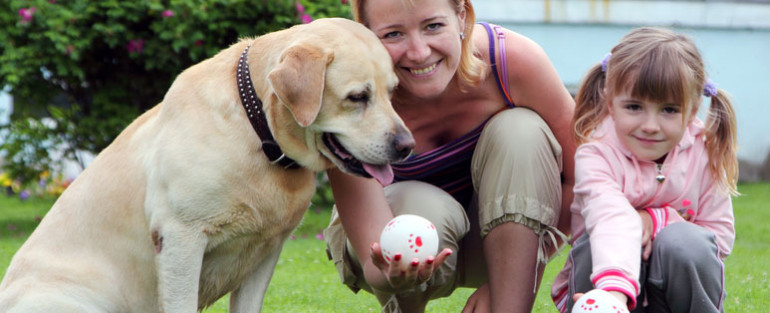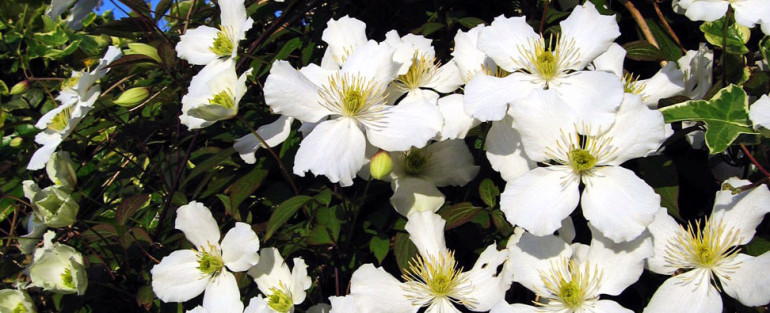
If you have animal companions, you know the importance of allowing them access to the outdoors to run, play, investigate their yards and take in fresh air. You are probably also concerned with the safety issues involved with keeping them confined to your property while keeping uninvited animal guests out.
Properly installed, intelligently selected fencing around your outdoor spaces makes all the difference in allowing a pet access to enjoy sufficient exercise outdoors, and a confined, unhappy animal. There are many different animal-oriented fencing options available, each with its own benefits and drawbacks. Here are some fencing basics to help you choose the right fencing choice for you, your pet and your property.
Dogs
Many dog owners don’t feel they have the time or ability to take their pet on multiple daily walks, and most cities and towns have leash laws and ordinances prohibiting dogs from running loose without supervision. Chaining is never the answer, but there are a few fencing options available:
- Dog runs – Typically constructed from chain-link fencing, they provide an outdoor exercise area and visual access. Newer innovations feature an attractive vinyl coating as well as powder coated pipe to dress up the look of boring galvanized chain-link fencing.
- Invisible fencing – Requires the use of installed underground wires around your property perimeter, transmitters and clunky collars. When your dog approaches the boundary, they are given a static energy pulse, mild shock, citronella spray or unpleasant noise. After time, some dogs become used to the shocks, noise or smell, and it no longer serves as a deterrent. Some city ordinances ban electronic containment systems, or require special permits. The main flaw in invisible fencing is that while it may keep your pet contained, it does not prevent other animals or people (who may do your pet harm) from entering your property.
- Traditional fencing — The best overall solution for most dogs are fences made out of solid wood materials. They secure your dog, keep out other people and animals, and are an attractive addition to your landscape. In addition, they prevent your dog from looking beyond his immediate territory, which is helpful for dogs more prone to barking. Tall privacy fences are suitable for large jump-happy breeds, and they can be installed with a dig-proof footing for thwarting diggers.
Cats
Most people would like to allow their cats outside access, but worry about roaming issues and predators. However, keeping your cat indoors can result in a fat cat. Over 50 percent of felines were found to be overweight or obese in a study by the APOP (Association for Pet Obesity Prevention) in 2011. Inactivity predisposes your cat to sedentary obesity and diabetes. Better solutions for cats are:
- Vinyl-coated chain link – Allows your cat free reign of your yard. They look good, provide safety, and are difficult to climb. Combined with a cat-proof fence conversion system, you never have to worry about Fluffy wandering the neighborhood. The conversion systems easily attach to chain-link fences with bolts, and feature a spring-loaded arm and baffle that folds under your cat’s weight, to deter even the wiliest escape artist.
- Wood fences – Best for homes with a cat and dog duo. They are easily fitted with a fence conversion kit. An added plus is that they serve double duty as a scratching post, to spare your furniture.
When shopping for fencing for your companion animals, be sure to work with an experienced fencing contractor who will consider your needs, preferences and budget to arrive at the best solution for your pet-friendly fencing project.

While there are many plants you don’t want to go around fencing, ones that have roots that can destroy the fence, there are still many pretty flowers and plants that can go around the fence area. Here are some ideas that can work well in flower beds that are near fencing.
Clematis
With over 400 cultivars, you’re bound to find one of these that will work for you. Semi-woody vines have saucer-shaped flowers in any color you care to choose. Have these trail along the pickets of the fence for the most dramatic effect.
Cherokee Rose
This climbing rose has a wonderful cream-white color on vine-like canes. It produces single flowers with glossy light-green leaves. These are a wonderful addition to have on dark wood or white fencing.
Russian Sage
Grey-white stems with silver-grey leaves and lavender flowers. This subshrub has a great aroma and can be a lovely addition to fencing that is around a patio, so guests can smell the richness of the plant.
Black-eyed Susan
Yellow-orange blooms with a dark center stand erect and daisy-like on stems. This is a summertime favorite and one that will work with just about any other type of plant. This is a good addition for a border plant and for those that like the classic feel of a daisy-like bloom.
Flowers and plants around a fence can make a dramatic statement and really add life to the straight line of a fence. It makes landscaping easier when you don’t have to mow near the fence, and it can be a nice visual to help increase the value of your home. If you don’t have flower beds around your Dallas, Texas fencing, give some of these great choices a try.



Recent Comments